During assembly, does placing the battery cells vertically or sideways affect the battery pack life?
Imagine spending countless hours and significant resources designing the perfect battery pack, only to have its lifespan cut short not by a complex electrochemical failure, but by a simple, fundamental decision made on the assembly line: the orientation of the battery cells. This is not a mere theoretical concern; it is a critical engineering choice that resonates through the entire life of the pack. While it might seem like a minor mechanical detail, whether you place battery cells vertically or sideways can have profound implications on thermal management, mechanical stability, and ultimately, the longevity and safety of the entire system. This deep dive explores the intricate science behind this assembly choice, moving beyond simplistic answers to provide a comprehensive understanding of how orientation dictates performance over thousands of charge-discharge cycles.
- Understanding the Core Component: The Battery Cell
- The Vertical Orientation: A Traditional Approach
- The Sideways (Horizontal) Orientation: An Alternative Strategy
- A Comparative Analysis: Vertical vs. Sideways in Real-World Scenarios
- Beyond Orientation: Other Critical Factors in Pack Longevity
Understanding the Core Component: The Battery Cell
To fully grasp the impact of orientation, we must first understand the object in question: the modern lithium-ion battery cell. Inside every seemingly simple cylindrical, prismatic, or pouch cell lies a complex and precisely engineered world. The core components include a positive electrode (cathode), a negative electrode (anode), a separator that prevents physical contact while allowing ion flow, and a liquid electrolyte that facilitates the movement of lithium ions. These components are wound or stacked with extreme precision. The performance and degradation of this single **battery cell** are governed by a myriad of factors, including temperature gradients, internal pressure, and the integrity of the internal structure over time.
The Internal World of a Li-ion Cell
The degradation mechanisms inside a **battery cell** are subtle but cumulative. Key among them are the growth of the Solid Electrolyte Interphase (SEI) layer, lithium plating, and mechanical stress on the electrodes. All these processes are highly sensitive to temperature. An ideal scenario is one where the entire cell operates at a uniform temperature. Any significant temperature variation across the cell, known as a thermal gradient, can accelerate degradation in the hotter spots, leading to localized failure and a reduction in overall capacity. This fundamental principle is where the question of orientation finds its significance.
>>See also How to Choose the Right BMS for the MB56 Lithium Iron Phosphate Cell?
The Vertical Orientation: A Traditional Approach
Placing **battery cells** vertically, with their positive and negative terminals facing up and down, is a common configuration, especially in cylindrical cell formats like 18650s or 21700s. This approach is often chosen for its simplicity in module design and its alignment with the natural geometry of many cell types.
Thermal Management in Vertical Stacks
From a thermal perspective, vertical orientation creates a natural chimney effect. As the cells heat up, the air or coolant around them also heats up and rises. In a vertically oriented pack, this natural convection can, in some passive cooling designs, aid in carrying heat away from the top of the cells. However, this benefit is often minimal in high-power applications. The major challenge is that heat is typically generated throughout the cell body, and in a vertical stack, the top of the cell stack can become significantly hotter than the bottom if cooling is not meticulously designed. This creates a vertical thermal gradient within the module, which is detrimental to the individual cells.
Mechanical and Structural Considerations
Mechanically, vertical placement can be robust. For cylindrical cells, it allows for efficient packing in a honeycomb structure, providing good structural rigidity to the module. The forces of compression can be more easily applied evenly across the end caps. However, a critical risk emerges from internal gassing. All lithium-ion cells produce small amounts of gas during their lifecycle, and in a failure scenario, gas production can be rapid. In a vertical orientation, gas bubbles can rise and become trapped at the top of the cell, often near the safety vents and terminals. This can potentially interfere with the operation of safety devices or create localized hot spots by displacing the electrolyte from the top regions of the jelly roll, impeding heat transfer and ion flow.
The Sideways (Horizontal) Orientation: An Alternative Strategy
Placing cells sideways, or horizontally, involves orienting them so that their cylindrical axis or prismatic face is parallel to the ground. This approach requires a different design philosophy but can offer distinct advantages in specific applications.
Optimizing Thermal Uniformity Horizontally
The most significant potential advantage of a horizontal layout is in thermal management, particularly with liquid cooling. A cold plate can be placed flush against the large, curved surface of a cylindrical cell or the flat face of a prismatic cell. When cells are stacked horizontally, this allows the primary cooling surface to run along the entire length of the cell. This configuration can dramatically reduce the thermal gradient along the cell's longest axis. A more uniform temperature profile directly translates to more uniform electrochemical reactions and slower, more even degradation across the electrode materials, thereby extending the life of the **battery cell**.
Addressing Mechanical Stress and Gassing
From a mechanical standpoint, a horizontal stack must be carefully designed to prevent sagging or shifting over time, which could lead to connections becoming loose. Vibration damping is also a different challenge. Regarding gassing, the horizontal position can allow gas bubbles to disperse along the top curvature of the cell rather than accumulating directly at the critical terminal area. This might reduce the risk of the gas directly interfering with the vent mechanism, although it doesn't eliminate the underlying problem of gas generation.
A Comparative Analysis: Vertical vs. Sideways in Real-World Scenarios
There is no universal "best" orientation. The optimal choice is a direct function of the cell format, the cooling strategy, and the application's specific demands.
Impact on Cycle Life and Long-Term Degradation
Studies and extensive field data have shown that the key to longevity is temperature uniformity. A vertically oriented cell with poor cooling will develop a large top-to-bottom temperature gradient, leading to accelerated SEI growth and lithium plating at the hotter end. This uneven aging reduces the cell's usable capacity and increases internal resistance much faster than in a horizontally oriented cell that is effectively cooled along its length, maintaining a near-isothermal condition. Therefore, for a system relying on passive or low-efficiency cooling, vertical orientation might lead to a shorter pack life. In contrast, a system designed with a bottom or side-mounted cold plate can make horizontal orientation the superior choice for longevity.
Safety and Reliability Implications
Safety is paramount. Orientation influences the effectiveness of safety features. A vertically oriented cylindrical cell has its Burst Disc (CID) at the top, designed to vent gases and potentially discharge in a controlled manner. If gas accumulates at the top, it can hinder this mechanism. In a horizontal setup, the vent is on the side, and gas distribution might be different, but a potential risk is that ejected materials from a venting cell could be directed horizontally towards adjacent cells, potentially causing a thermal domino effect. The design must incorporate robust barriers to mitigate this risk. The reliability of busbar connections, the management of thermal expansion, and the system's ability to handle vibration all change with orientation, requiring a holistic engineering analysis for each specific **battery cell** format and pack design.
>>See also How to determine if EVE cells are grade A quality?
Beyond Orientation: Other Critical Factors in Pack Longevity
While the debate between vertical and sideways placement is crucial, it is just one piece of the puzzle. Focusing solely on it would be a mistake. The assembly process and overall pack design involve several other, often more dominant, factors that interact with orientation.
The Role of Advanced Thermal Management Systems (TMS)
The most decisive factor for battery pack life is the Thermal Management System (TMS). A sophisticated TMS can compensate for the inherent thermal drawbacks of any orientation. For example, a vertical pack with strategically placed inter-cell cooling fins or a direct-to-cell liquid cooling jacket can achieve excellent temperature uniformity, negating the potential advantage of a basic horizontal layout. The choice of coolant, flow rates, and the thermal interface materials are often more impactful on the final **battery cell** temperature than the orientation itself.
BMS Sophistication and Cell Balancing
A highly sophisticated Battery Management System (BMS) is the brain of the pack. Its ability to monitor the voltage, temperature, and current of individual cells or groups is vital. A advanced BMS can implement proactive balancing to compensate for minor capacity mismatches that arise from small temperature variations, regardless of whether those variations are caused by vertical or horizontal stacking. Without a smart BMS, even a perfectly oriented pack will see its life diminished due to electrical imbalances.

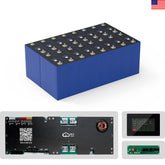

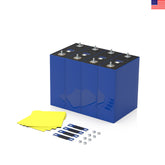
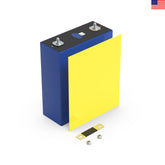
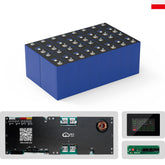

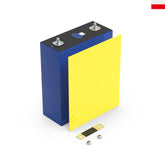

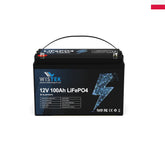
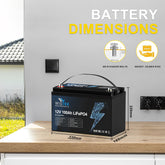



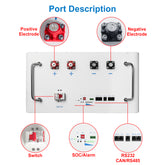




Leave a comment
All blog comments are checked prior to publishing